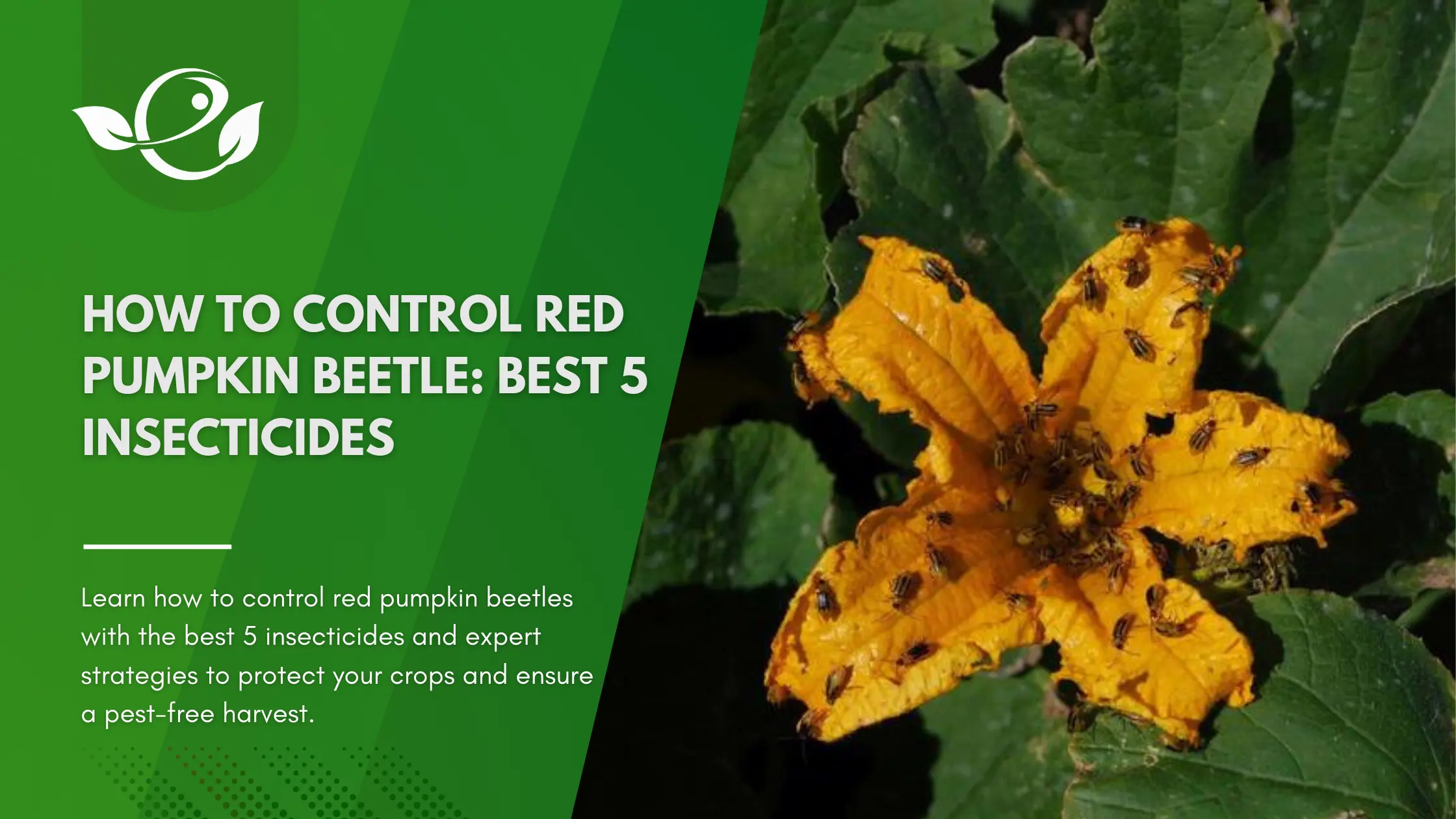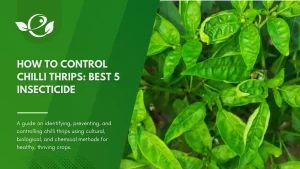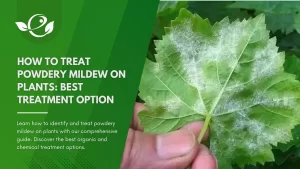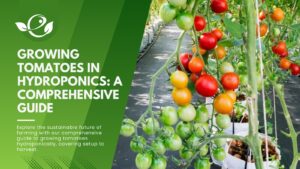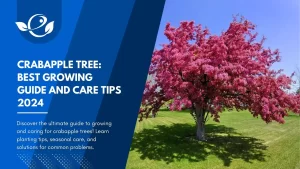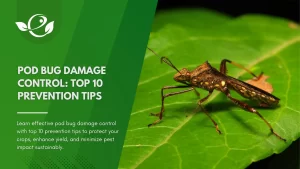Table of Contents
The red pumpkin beetle is one of the most notorious pests that home gardeners and farmers alike have to contend with. Found in regions across Asia, Africa, and Europe, this tiny beetle can cause significant damage to a wide range of crops, particularly in the cucurbit family, such as pumpkins, melons, cucumbers, and squash. Infestations, if left unchecked, can lead to stunted growth, reduced yields, and poor-quality produce.
While there are various organic and chemical methods to control red pumpkin beetles, choosing the right strategy depends on your garden’s scale, type of crop, and pest pressure. In this article, we’ll explore the biology of the red pumpkin beetle, highlight cultural control methods, and most importantly, delve into the top five insecticides that can effectively curb this persistent pest. With an expert understanding of both organic and synthetic solutions, you can protect your crops and ensure a bountiful harvest.
Identifying Red Pumpkin Beetles
Before we dive into the control methods, it’s crucial to be able to correctly identify red pumpkin beetles and the damage they cause. Early detection is key to successful management and ensuring your crops remain healthy.
Appearance of Adult Beetles and Larvae
The adult red pumpkin beetle, scientifically known as Aulacophora foveicollis, is a small, orange-red beetle measuring about 6 to 8 millimetres in length. Their vibrant colour makes them relatively easy to spot on the foliage of plants. The beetles have a round, slightly elongated body with distinctive antennae and three pairs of legs. While their small size might seem inconsequential, their ability to consume significant amounts of plant material makes them a formidable threat.

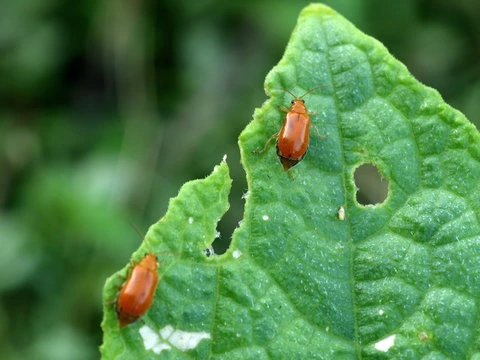
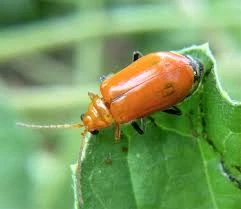
The larvae, on the other hand, are white grubs that reside in the soil. These larvae primarily feed on the roots of plants, further adding to the damage caused by the adult beetles. The dual feeding habits of both adult beetles and larvae make the red pumpkin beetle particularly destructive, as they can affect both the foliage and the root system.
Life Cycle of the Red Pumpkin Beetle
Understanding the life cycle of the red pumpkin beetle is essential for implementing timely control measures. These beetles lay eggs in the soil near host plants, and after hatching, the larvae begin feeding on the roots. The larvae pupate in the soil, and the emerging adults start feeding on plant foliage, flowers, and fruit. The beetles are most active during warm weather, making early summer the prime time for infestations.
Symptoms of Red Pumpkin Beetle Infestation
A red pumpkin beetle infestation can be identified by several telltale signs:
- Feeding Damage on Leaves: The beetles chew irregular holes in the leaves, giving them a lace-like appearance. In severe cases, entire leaves may be devoured.
- Root and Stem damage: The grubs of this pest remain in the soil and feed on the roots and underground stems of the plants, which causes rotting and withering of the stems and roots.
- Defoliation: Heavy infestations can result in significant defoliation, leaving the plants weakened and susceptible to other pests or diseases.
- Damage to Flowers and Fruits: The beetles also feed on flowers, reducing pollination and fruit set. They may damage young fruits, leading to scarring and malformed produce.
- Stunted Growth: The larvae’s feeding on the roots may inhibit the plant’s ability to absorb nutrients, leading to poor growth and development.
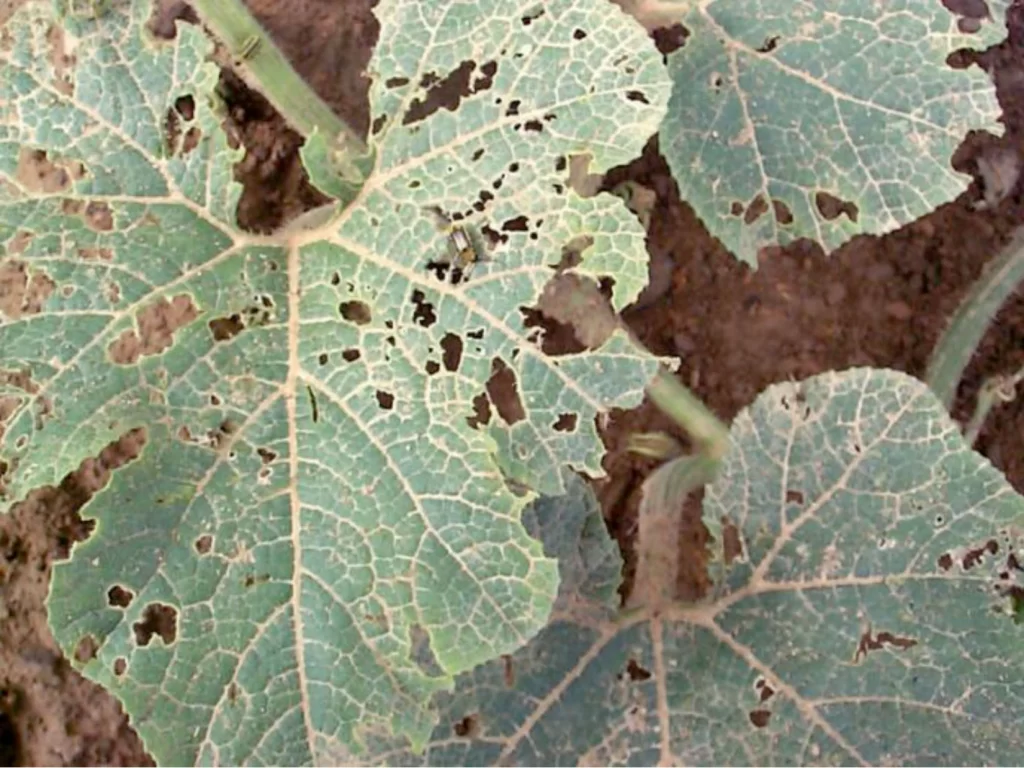
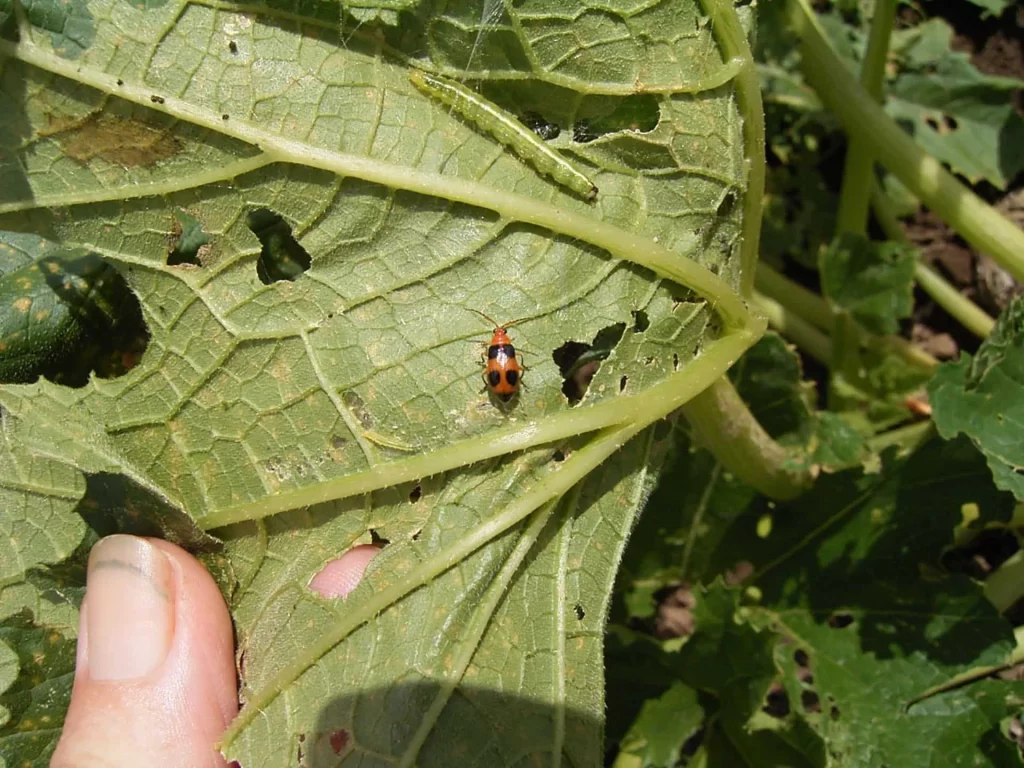

Cultural Control Methods
Cultural control methods are preventive strategies that can significantly reduce the likelihood of red pumpkin beetle infestations. These methods focus on disrupting the beetle’s life cycle and making the environment less hospitable for them.
Crop Rotation
One of the most effective methods of controlling red pumpkin beetles is through crop rotation. Since the beetles primarily target cucurbit crops, rotating these with non-host plants (such as legumes or leafy greens) can help break the pest’s life cycle. By planting cucurbits in different areas each season, you reduce the chances of overwintering beetles emerging near their preferred food source.
Trap Crops
Trap cropping is a strategy that involves planting a highly attractive crop, like zucchini, near the main crop. The red pumpkin beetles are drawn to the trap crop, allowing you to concentrate your control efforts there. Once the beetles have gathered on the trap crop, they can be manually removed or targeted with insecticides. This method reduces the overall beetle population and limits damage to your main crop.
Handpicking Beetles
In small garden settings, manual removal of beetles can be a simple yet effective method of control. By regularly inspecting your plants and physically removing the beetles, you can prevent populations from reaching damaging levels. Early morning is the best time to handpick beetles, as they are less active in cooler temperatures.
Garden Hygiene
Maintaining a clean garden environment is crucial in preventing red pumpkin beetle infestations. Beetles often lay their eggs in plant debris, and larvae overwinter in the soil. By clearing away plant residues at the end of the growing season, you reduce the beetle’s overwintering sites. Additionally, turning over the soil in the offseason can expose larvae to harsh weather conditions, killing them before they can mature.
Biological Control
Natural enemies attack the beetle, including members of the tachinid family and the reduviid Rhynocoris fuscipes. Mix half a cup of wood ash and half a cup of lime in 4 litres of water, and leave to stand for a few hours. Strain and test this mixture on a few infested plants before applying on your field. Apply the mixture as a foliar spray on your crop.
Alternatively, you can use plant-derived products such as neem (NSKE 5%), derris or pyrethrum (add soap with it) @ 7-day interval. Apply Triciderma Trichoderma as seed and nursery treatment and Pseudomonas fluorescens as seed, nursery treatment and soil application. Use trap crops that were treated with a strong insecticidal spray to attract and kill the adult beetles.
Best 5 Insecticides for Red Pumpkin Beetle Control
When cultural methods aren’t enough, insecticides can provide an efficient solution for controlling red pumpkin beetles. Below are the five best insecticides that have been proven to work effectively against red pumpkin beetles.
1. Imidacloprid
Imidacloprid is a systemic insecticide that is absorbed by the plant and works by disrupting the nervous system of insects that feed on it. It is one of the most effective insecticides for controlling red pumpkin beetles because it kills both adults and larvae when they consume treated plant tissue.
- Mode of Action: Imidacloprid interferes with nerve signal transmission, causing paralysis and death in the beetles.
- How to Use: Imidacloprid can be applied as a soil drench, foliar spray, or seed treatment. The systemic nature means that once applied, it protects the plant for an extended period.
- Safety Considerations: While effective, imidacloprid can be harmful to beneficial insects like bees. Apply it during the early morning or late evening when pollinators are less active, and avoid spraying directly on flowers. Always refer to the product labels and accompanying leaflets for complete product details and safety measures.
2. Spinosad
Spinosad is a biological insecticide derived from a naturally occurring soil bacterium. It is widely used in organic farming due to its natural origin and relatively low toxicity to beneficial insects.
- Mode of Action: Spinosad targets the insect’s nervous system, causing muscle contractions and death. It is especially effective against feeding adults.
- How to Use: Spinosad is typically applied as a foliar spray. For best results, spray the underside of leaves where beetles often congregate.
- Safety Considerations: Spinosad is safe for use in organic gardens, but it can still affect pollinators. Apply it late in the day when bees are less likely to be foraging. Always refer to the product labels and accompanying leaflets for complete product details and safety measures.
3. Carbaryl (Sevin)
Carbaryl, commonly known by its trade name Sevin, is a contact insecticide that kills insects upon direct contact or ingestion. It is widely used for controlling a variety of pests, including the red pumpkin beetle.
- Mode of Action: Carbaryl inhibits the enzyme cholinesterase, which is essential for proper nerve function. This leads to paralysis and death in the beetles.
- How to Use: Carbaryl can be applied as a dust or spray. For optimal control, ensure thorough coverage of the plants, particularly the undersides of leaves and flower buds.
- Safety Considerations: While highly effective, Carbaryl can also harm beneficial insects and wildlife. Use it sparingly and according to label instructions. Always refer to the product labels and accompanying leaflets for complete product details and safety measures.
4. Malathion
Malathion is an organophosphate insecticide that works by disrupting the nervous system of insects. It is highly effective against red pumpkin beetles and is commonly used in both agricultural and garden settings.
- Mode of Action: Malathion affects the beetles’ nervous system, causing over-stimulation and death.
- How to Use: It is typically applied as a spray. Apply when beetles are active, usually in the early morning or late afternoon.
- Safety Considerations: Malathion can be harmful to humans, pets, and wildlife if not used properly. Follow all safety guidelines and wear protective clothing during application. Always refer to the product labels and accompanying leaflets for complete product details and safety measures.
5. Neem Oil
Neem oil is a natural insecticide that is derived from the seeds of the neem tree. It is particularly favoured by organic gardeners due to its low toxicity and its ability to act as both a repellent and an insecticide.
- Mode of Action: Neem oil disrupts the feeding and reproduction of insects, effectively reducing the beetle population over time.
- How to Use: Neem oil is applied as a foliar spray, with a focus on new growth and young leaves. Reapply every 7-10 days, especially after rainfall.
- Safety Considerations: Neem oil is safe for use in organic gardens and is non-toxic to humans and animals. However, avoid spraying during high temperatures or direct sunlight, as it can cause leaf burn. Always refer to the product labels and accompanying leaflets for complete product details and safety measures.
Note: Always consider an integrated approach with preventive measures together with biological treatments, if available. Deltamethrin @ 250 ml/acre can be used when 1 adult/10 plants are detected in the nursery. Synthetic pyrethroids are likely to be effective but are at the same time harmful to natural enemies. The use of trap crops that were treated with a strong insecticidal spray can attract and kill the adult beetles. Spray fenitrothion as soon as the pest is detected and repeat the process at 15-day intervals.
Bonus Tip
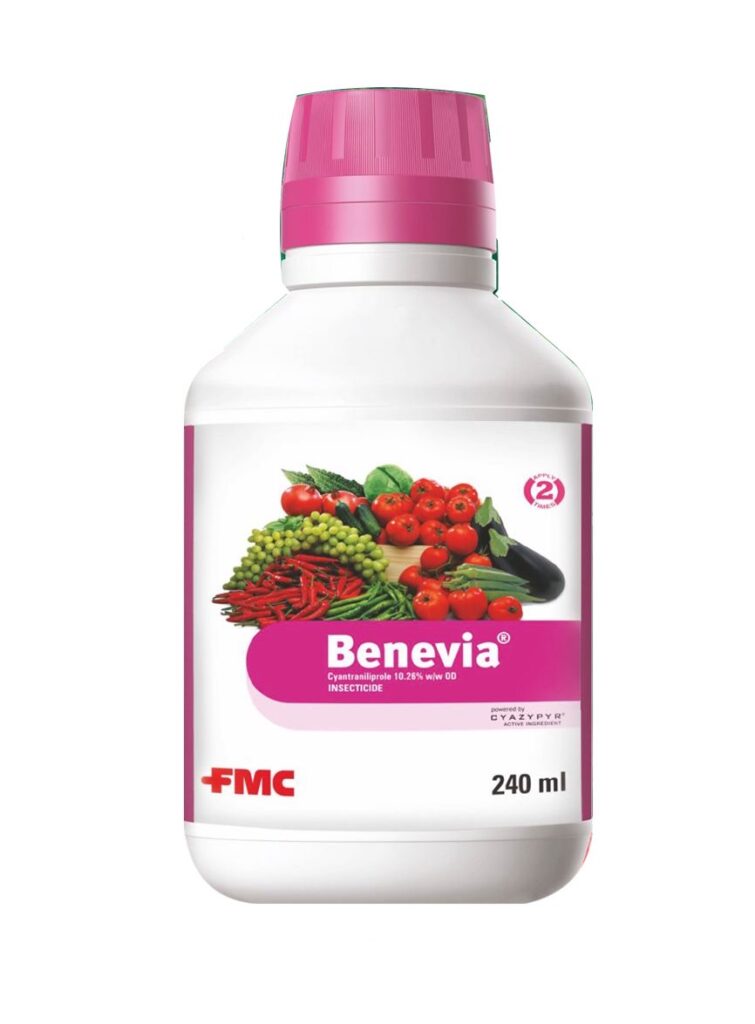
Benevia by DuPont
Cyantraniliprole 10.26% OD
- Category: Pesticides
- Always refer to the product labels and accompanying leaflets for complete product details and safety measures.
- Best for Cucumber
Application Best Practices
Regardless of which insecticide you choose, proper application is key to maximizing effectiveness and minimizing potential harm to your plants and the environment. Here are some best practices for applying insecticides to control red pumpkin beetles:
- Timing: The best time to apply insecticides is in the early morning or late evening when the beetles are most active. This timing also helps reduce the impact on pollinators, which are less active during these times.
- Rotation of Insecticides: To prevent the beetles from developing resistance to a specific insecticide, it’s important to rotate between different types of insecticides. This means alternating between systemic and contact insecticides, or between chemical and biological products.
- Safety Precautions: Always follow the safety guidelines on the insecticide label. Wear protective clothing, including gloves and masks, to avoid exposure to chemicals. Store insecticides in a safe place away from children and pets.
Integrated Pest Management (IPM) Approach
While insecticides are effective in controlling red pumpkin beetles, it’s always best to combine chemical control with other methods to minimize environmental impact and promote sustainable gardening practices. This approach, known as Integrated Pest Management (IPM), uses a combination of strategies to keep pest populations in check while reducing reliance on chemicals.
Combining Insecticides with Natural Predators
Encouraging natural predators such as ladybugs, spiders, and parasitic wasps can help control beetle populations. These beneficial insects prey on beetle larvae and adults, providing a natural form of pest control.
Regular Monitoring and Early Detection
One of the cornerstones of IPM is regular monitoring of your crops. By inspecting plants regularly for signs of beetles or damage, you can catch infestations early and take action before they become severe.
That’s It
Controlling red pumpkin beetles requires a multi-faceted approach, combining cultural practices, chemical controls, and natural solutions. Early detection and consistent monitoring are key to keeping these pests at bay. By using the best insecticides—such as Imidacloprid, Spinosad, Carbaryl, Malathion, and Neem oil—alongside IPM strategies, you can protect your crops and ensure a healthy harvest.
Always prioritize sustainable gardening practices, balancing chemical use with organic solutions and considering the broader ecosystem. With the right approach, your cucurbit crops will thrive, and red pumpkin beetles will be a problem of the past.
